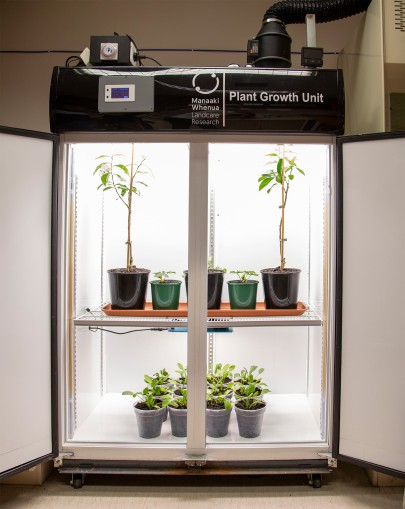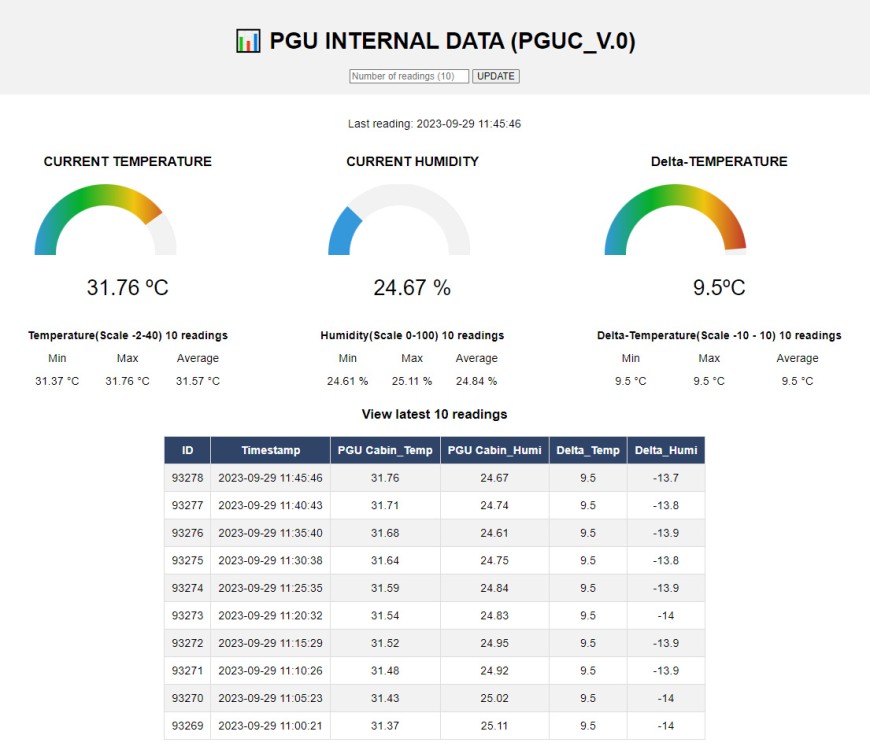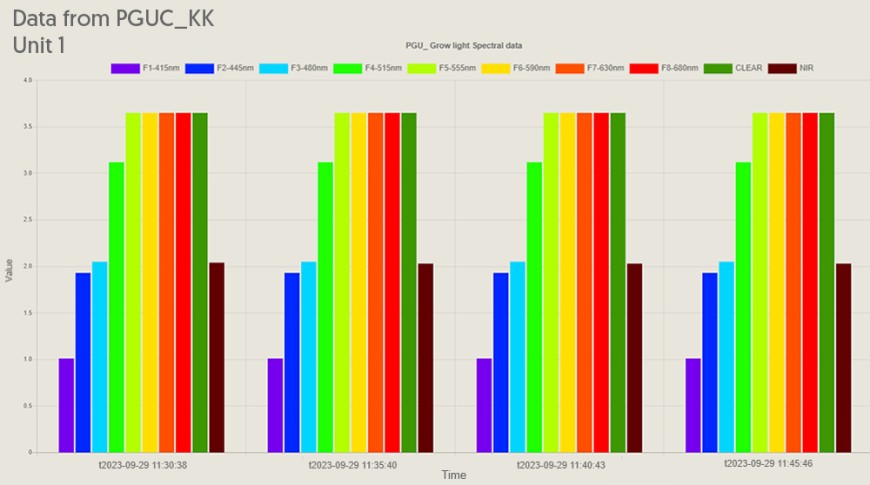Development of a semi-automated, inexpensive, climate-controlled plant growth unit

Figure 1. A view of the customised plant growth unit. (Photo: Adele Rycroft, Ray Deflector Photography, 2022)
To overcome the financial limitations of commercial PGUs, we developed an efficient, semi-automated plant growth chamber that can control humidity, light intensity and photoperiod at room temperature by integrating a custom-made microcontroller-based automation system with a dual-core Tensilica Xtensa LX6 microprocessor, also known as an ESP32.
The customised PGU has external dimensions of 1.2 m (width) × 0.75 m (depth) × 1.8 m (height), and a total internal volume of approximately 0.9 m3. The hardware cost approximately NZ$4,500. With this PGU we can supply plant material throughout the year. We are currently using our PGU to grow plants for research related to studying the temperature dependence of plant respiration and photosynthesis. To date, sunflower, spinach, bean, beet, and lemon plants have been grown in the PGU.
The control unit uses two sets of sensors (one inside and the other outside the PGU) to precisely monitor temperature, humidity, and light levels, plus actuators to control the light and ventilation (on the right on top of the unit in Figure 1) to promote good plant growth under carefully set conditions. The unit has two shelves with independent light sources so that two groups of plants can be grown simultaneously, with each receiving adequate illumination.
The growth chamber has a user-friendly interface that provides real-time data visualisation and control options for easy monitoring and control. A website associated with the PGU facilitates comprehensive data logging, with an interface to capture various environmental parameters, including temperature, humidity and light intensity. The website offers intuitive data visualisation tools such as graphs, charts, and heat maps for analysis and data-driven decision-making. The website also allows remote monitoring and control, enabling users to monitor and manage the chamber from anywhere. This remote functionality adds convenience and flexibility.

Figure 2. Dashboard of measurements of temperature, humidity, and light level monitored by sensors in the plant growth unit.
To study the light spectra used in the PGU we are using a 10-channel spectral sensor from AMS (Austria Mikro Systeme, now known as AMS OSRAM), the AS7341. Photosynthetically active radiation was calculated through a weighted summation of spectral band intensities, utilising a linear equation. The raw sensor values shown in Figure 3 are measurements from four different measuring times (x-axis) with 5-minute intervals. It shows the distribution/count of different visible light spectra (y-axis) characterised by the 10-channel spectral sensors (x-axis). Figure 3 provides an example of the consistency of light intensity across different spectra provided by the sensor within the PGU.

Figure 3. Web-based interface showing the light spectra in the plant growth unit.
Overall, the combination of the semi-automated growth chamber and its control via a remotely accessible website provides an efficient operation and allows successful plant cultivation, ensuring good growth under set environmental conditions, and reliable, data-driven decision-making.

